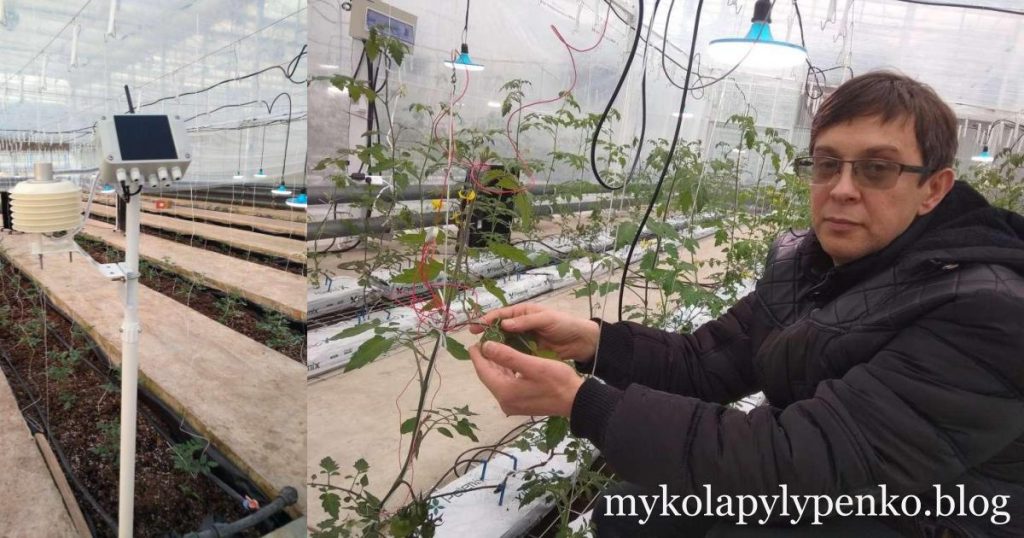
What is the profitability of a share? What makes more sense to rent it out or it is easier to sell it? What if it was inherited by you? I have no answers to these questions. I think, if you install a smart greenhouse there, it would be possible to grow something that would be very profitable.
Smart greenhouse
A smart greenhouse can do some of the work instead of service personnel. So, what kind of work are we talking about? And what can be automated?
If you set the required soil moisture parameter, you can maintain it within the normal range. It is enough to install moisture sensors and automate water consumption. Temperature and lighting can be controlled in the same way. So, what’s more?
Let’s ask Vitaly Ignatovich, an IoT expert from Austria about his opinion.
Vitaliy, what IoT technologies and how long have you been working with?
We have been developing our IoT sensors for agriculture since 2010. The principle of their operation was similar to the ZigBee technology, but with lower power consumption. Information transmitted via GPRS channel with a maximum distance up to 1 km.
Why did you choose LoRa technology? What are the benefits?
LoRa technology has increased the data transmission distance up to 10 km with the same low power consumption. At the same time, the decrease in the volume and the frequency of data transmission did not significantly affect the quality of the transmitted information. Because, for example, an air temperature sensor requires only 9 data bits. I think LoRa was designed with these requirements in mind. Therefore, LoRa technology is the natural choice for modern developments.
In the context of smart greenhouses, what parameters need to be monitored?
The most important are temperature and humidity. It is also necessary to control the light for photosynthesis and irrigation. In addition to the basic parameters, plant sensors are increasingly used: plant stem diameter, fruit size and leaf temperature. They allow you to determine the status and stress of plants faster and more accurately than conventional sensors. But their cost is much more expensive.
What plant sensors can detect the stress in plants?
Sensors for determining plant stress include sensors: leaf temperature and plant stem diameter.
The leaf temperature is compared with the ambient temperature. Usually, the leaf temperature should be 1-2 degrees lower than the air temperature during the day. If not, the plant may not be evaporating moisture. The reason may be insufficient moisture intake from the roots or the air humidity is too high.
The dynamics of changes in the plant stem diameter correlates with the cycle of moisture accumulation overnight (plants accumulate moisture in the stems) and its evaporation during the day. From these changes (within a few microns), you can determine the lack or excess of water. This information allows you to optimize water consumption.
Are there sensors that detect chemical stressors?
Such sensors exist but they are used for scientific research.
Is the purchase of sensors for measuring plant stem diameter and fruit size justified?
It depends on how efficiently they are used. In addition to sensors, you also need high-quality software. Real-time data will allow the agronomist to identify the problem timely.
How much can you reduce the number of employees and water consumption after installing IoT sensors?
The number of staff can be reduced by up to 50% in large farms with 20 or more greenhouses. With fewer greenhouses, each employee is unique. For example, one agronomist is enough for several greenhouses.
Saving water on rice and cotton reaches more than 50%, but on mushrooms – up to 10%. Savings in means of protection are not less important. Since using the optimal climate regime, we reduce the risk of diseases and pests.
What are the nuances of using IoT sensors?
The most basic nuance is to implement and use the system, overcoming the standard thinking.
How did you solve the issue with the repair of IoT sensors?
We give a one-year warranty for equipment. Typical uptime in a greenhouse is five years, but if it is open-air (unprotected area), it depends on many conditions and requires service. As a rule, a failed sensor is changed.
What advice would you give to farms in Ukraine on the use of IoT sensors?
Ukraine has historically efficient agriculture and a great amount of highly qualified agronomists. I always advise you to start with the simplest, low-cost solutions. Install several points with air temperature and humidity in greenhouses, get data analysis for one season. Optimize all parameters and see the results. If they suit you, you can switch to the technology of automatic control of irrigation, ventilation and other functions.
Interested in IoT sensors for greenhouses? Contact the specialists by agriocom.cn
Рlease, let us know by using the feedback form below …
Leave a Reply